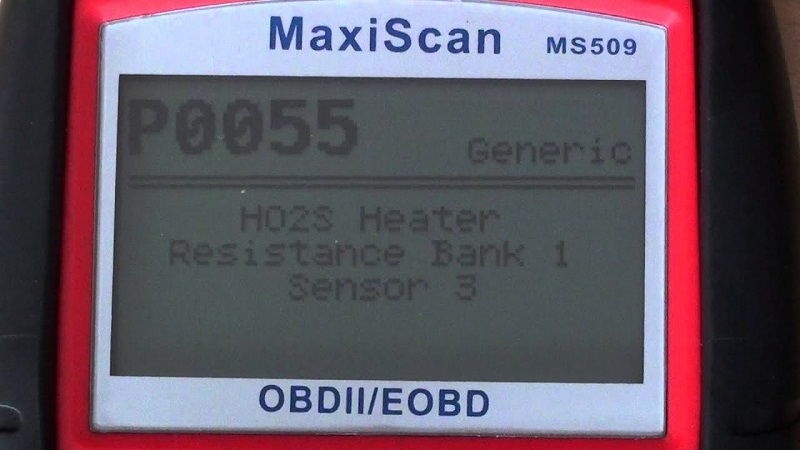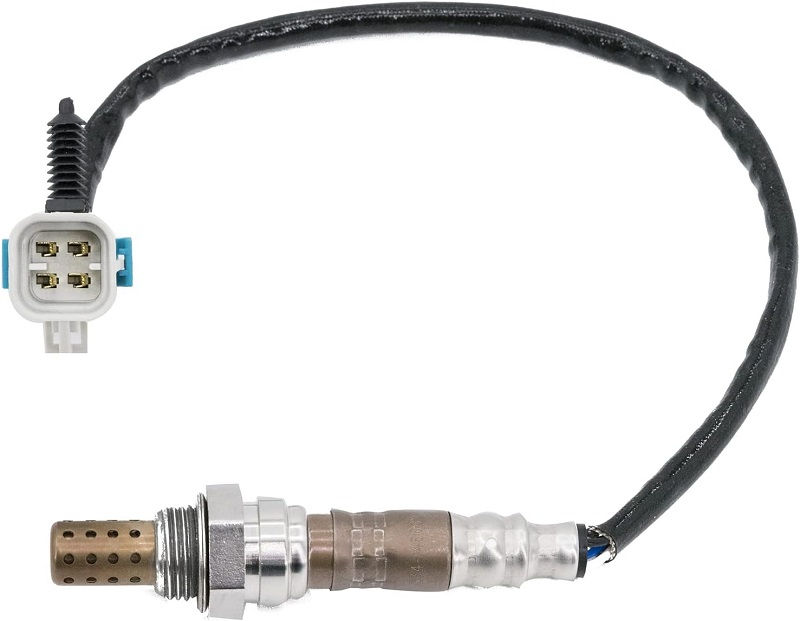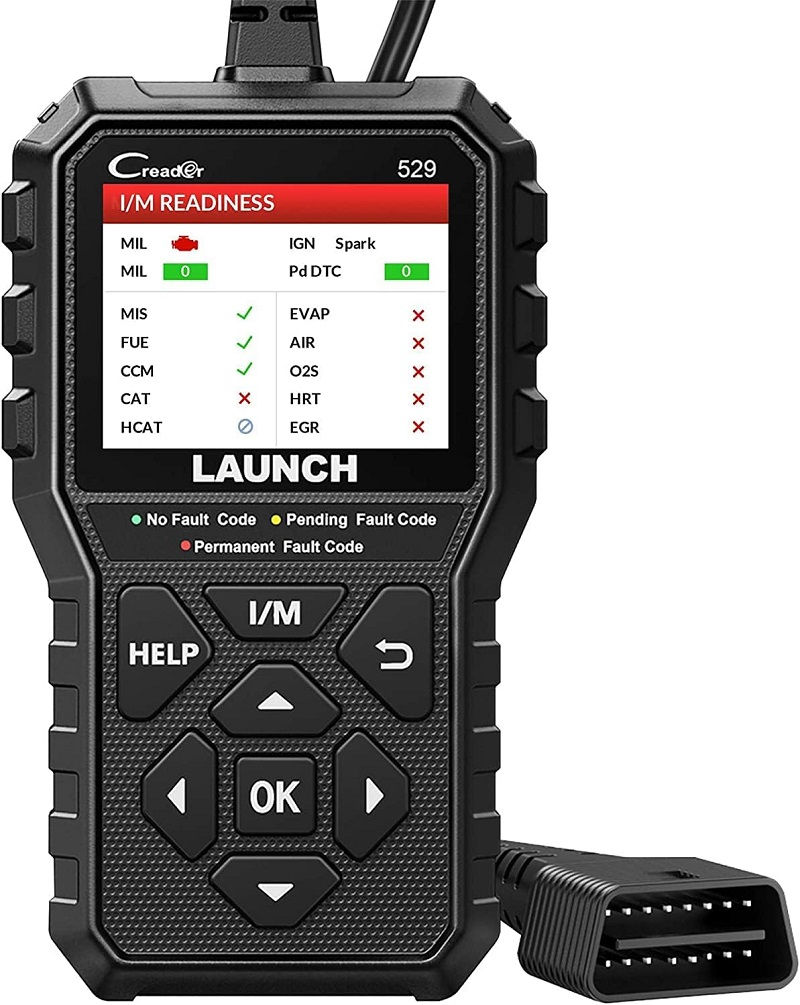This post contains affiliate links. This means I will make a commission at no extra cost to you should you click through and make a purchase [ “As an Amazon Associate, I earn from qualifying purchases.” ]. Read the full disclosure here.
P0055 Code HO2S Heater Resistance (Bank 1, Sensor 3): Unraveling the Code and Its Significance GuideMechanic.Com In the intricate realm of automotive diagnostics, trouble codes serve as invaluable indicators of potential issues within a vehicle’s diverse systems.
Among these, the P0055 code holds particular significance, as it pertains to the heater resistance of the heated oxygen sensor (HO2S), specifically in Bank 1, Sensor 3. In this comprehensive discourse, we delve into the meaning of the P0055 code, its underlying causes, observable symptoms, diagnostic procedures, and potential solutions.
See Also: P0054 Code HO2S Heater Resistance (Bank 1, Sensor 2)
Understanding P0055 Code:

The P0055 code is classified as a diagnostic trouble code (DTC) that relates to a detected issue with the heater resistance of the HO2S, also known as the oxygen sensor, situated in Bank 1, Sensor 3.
Within the intricate orchestration of engine management, the vehicle’s engine control module (ECM) diligently oversees the operation of the HO2S to ensure optimal combustion efficiency and emission control.
The heater element within the oxygen sensor plays a pivotal role in achieving and maintaining the requisite operating temperature for accurate sensor readings.
Causes of P0055:
Several factors can contribute to the activation of the P0055 code, including:
Malfunctioning Oxygen Sensor Heater:
One of the primary culprits behind this code is a defective heater within the oxygen sensor itself. Over time, the heater element may degrade due to age, exposure to extreme temperatures, electrical faults, or other factors, resulting in increased resistance.
Wiring Abnormalities:
The presence of damaged, corroded, or disconnected wiring and connectors associated with the HO2S heater circuit can impede the heater’s functionality, thereby triggering the P0055 code.
ECM Anomalies:
In rare instances, a malfunctioning engine control module (ECM) may erroneously detect a problem with the HO2S heater circuit, leading to the illumination of the check engine light and the setting of the P0055 code.
Exhaust System Leaks:
Leakage in the exhaust system near the location of the oxygen sensor may subject the sensor to excessive heat or permit external air to interfere with its operation, potentially causing disruptions in the heater circuit.
Symptoms of P0055 Code:

When confronted with the presence of the P0055 code, drivers may observe the following symptoms:
Check Engine Light Activation:
The foremost indicator of a potential issue is the illumination of the check engine light on the vehicle’s dashboard, signaling the detection of a problem with the HO2S heater circuit.
Reduced Fuel Efficiency:
A malfunctioning oxygen sensor heater can compromise the sensor’s ability to furnish accurate data to the ECM, resulting in diminished fuel efficiency and potential performance issues.
Elevated Emissions:
An impaired HO2S heater may disrupt the proper control of the fuel-air mixture, consequently leading to heightened emissions of harmful pollutants from the vehicle’s exhaust system.
P0055 Code HO2S Heater Resistance (Bank 1, Sensor 3)
Diagnosis and Repair:

Efficiently diagnosing and rectifying the P0055 code necessitates a systematic approach, encompassing the following steps:
DTC Retrieval:
Initiate the diagnostic process by employing an OBD-II scanner to retrieve the stored trouble codes from the vehicle’s ECM, including the P0055 code.
Examination of Wiring and Connectors:
Conduct a meticulous inspection of the wiring harness and connectors associated with the Bank 1, Sensor 3 oxygen sensor heater circuit. Look for signs of damage, corrosion, or disconnection, and proceed to repair or replace any compromised components as warranted.
Heater Resistance Evaluation:
Utilize a multimeter to measure the resistance of the HO2S heater circuit. Compare the measured resistance against the manufacturer’s specified range. If the resistance deviates significantly from the prescribed parameters, it may necessitate the replacement of the oxygen sensor.
Exhaust System Inspection:
Scrutinize the exhaust system for any indications of leaks or damage in proximity to the oxygen sensor’s location. Rectify any identified leaks and ensure the proper sealing of exhaust components.
Verification of ECM Functionality:
In cases where all other potential causes have been eliminated, consider assessing the functionality of the ECM using specialized diagnostic equipment. If deemed defective, proceed with the replacement of the ECM.
DTC Clearance and Road Testing:
Upon completion of repairs, clear the stored trouble codes from the ECM’s memory using the OBD-II scanner. Subsequently, embark on a road test to ascertain that the issue has been effectively addressed, and the P0055 code does not resurface.
Conclusion:
See Also: P0053 Code HO2S Heater Resistance (Bank 1, Sensor 1)
The P0055 code, indicative of HO2S heater resistance irregularities in Bank 1, Sensor 3, serves as a critical pointer towards potential anomalies within the vehicle’s oxygen sensor and associated circuits.
Timely and precise diagnosis, coupled with appropriate remedial measures, is imperative for restoring optimal engine performance, fuel efficiency, and emission control capabilities.
By comprehending the significance of the P0055 code and adhering to meticulous diagnostic protocols, automotive technicians can proficiently identify and rectify issues pertaining to the HO2S heater circuit, thereby ensuring the seamless operation of the vehicle’s engine management system.
- Seafoam Catalytic Converter Cleaner: It Work & How to Use It? - April 18, 2025
- Rislone Catalytic Converter Cleaner: What It Is, How It Works - April 18, 2025
- Wynn’s Catalytic Converter Cleaner 325ml - April 17, 2025
